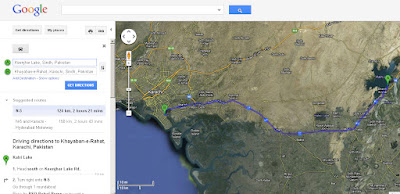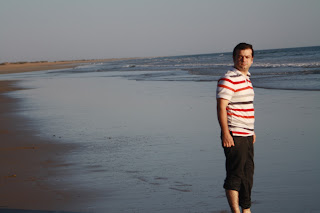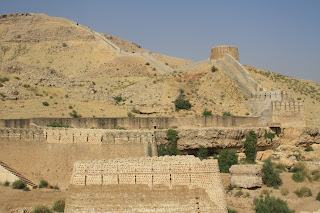All the photographs in the blog have been taken by Bilal Hameed.
Finally we were to head towards Karachi today. However before setting out we had also planned to visit the famous Makli tombs in Thatta which were on the way. We left the motel at around 9 am.
One of the largest necropolises in the world, with a diameter of approximately 8 kilometers, Makli Hill is supposed to be the burial place of some 125,000 local rulers, Sufi saints and others. Legends abound about its inception, but it is generally believed that the cemetery grew around the shrine of the fourteenth-century Sufi, Hamad Jamali. The tombs and gravestones spread over the cemetery are material documents marking the social and political history of Sind.
Imperial mausoleums are divided into two major groups, those from the Samma (1352–1520) and Tarkhan (1556–1592) periods. The tomb of the Samma king, Jam Nizamuddin II (reigned 1461–1509), is an impressive square structure built of sandstone and decorated with floral and geometric medallions. Similar to this is the mausoleum of Isa Khan Tarkhan II (d. 1651), a two-story stone building with majestic cupolas and balconies. Today, Makli Hill is a United Nations World Heritage Site that is visited by both pilgrims and tourists, but in need of conservation and maintenance.
Once we were at the place Bilal also told us about a documentary that he had seen on TV. According to that documentary this place was haunted as there were spirits lurking around the place in the shape of humans. Visitors saw them, met them and also took photos with them. But afterwards nothing could be seen in the photos. Hmmmmm..........hocus pocus or fertile imaginations..... well whatever the case was we did not take any pictures with any of the people we saw there... ;D
 |
| Oh my gosh! Bilal is missing from this pic... ;D |
After spending about 40 or so minutes at Makli hill we finally headed towards Karachi. The plan was to dump our luggage in the guest house, pick up Bilal’s Friends, Manzoor aka Mooni, and go for a drive on the Makran coastal highway.
The aim was to reach Defense Phase 5 in Karachi, where our guest house was. Bilal had taken over the driving today because he was familiar with the roads in Karachi; He had lived in Karachi for a few years previously.
We finally managed to reach the guest house at around 1 pm. At a glance the place was clean, spacious and well maintained. It was also a cost effective choice. After hurriedly checking in we went to pick up Manzoor who lived nearby. Manzoor and Bilal are very old friends; their friendship go back around 15-16 years. Over the course of next 4 days Manzoor became our very valuable and trusted friend and guide in Karachi.
He sat behind the wheel and we made our way towards the makran coastal highway.
So we were now heading towards the famous coastal highway. The excitement of entering Baluchistan was high; 4 of us, with the exception of Samina, had never visited that province before. Manzoor was being a very diligent guide and kept on pointing to noteworthy landmarks on the way.
The mood in the car was jovial and ragging was on. All morning Balouch had been going on and on about his 12 years of friendship with Bilal and how old and precious their association was. As soon as Manzoor got in the car I started highlighting the fact that Manzoor's association was even older than Balouch's, much to his chargain. Anyways it made the journey fun and interesting.... :)
Initially the coastal highway seemed like one never ending road with rocky hills on one side and mostly sandy terrain on the other side. There was no hint of sea anywhere. This went on for about 2 hours of our journey. During this initial 2 hours there came an off-road path leading to the mud volcanoes. That was also about 1 hour drive further into the sandy terrain. We wanted to see it but decided to do that on our way back.
On the way we also crossed a river called Hungol river. And there is a Hungol national park as well in the vicinity. Apparently the river also has crocodiles but we didnt see any. Maybe it was not the right time of the day.
 |
| Hungol river, Baluchistan |
 |
| Footprints on the sands of time |
 |
| Getting our "foot" act together |
However the issue was that we were running low on diesel in our car. The coastal highway is a long beautiful drive but unfortunately there are no petrol pumps on the way at all. The only fuel you are able to find there is what has been smuggled from Iran and that too from road side vendors and not a proper authorised station.
The guys were hesitant to use that fuel lest it caused any engine problem with our vehicle: we had to drive back to Islamabad in the same car... :)
So we decided to head back as sun was also about to set and it would be unwise to get stuck on the coastal highway at night time where there is hardly any traffic.
Lessons learnt were that we should have dedicated one whole day for coastal highway, should have carried extra fuel and if possible should also have had a second car in the convoy; lest one breaks down the other one will be around to fetch help. It would have been great to drive further down as that was when the highway had started to drive right next to the coast line.
We were disappointed as we did miss out on seeing the princess of hope, mud volcanoes (we did not stop on our way back as it was getting dark) and hungol national park.
So again after a very full day we reached our guest house, Manzoor dropped us off. And after a dinner of Karachi biryani all of us hit the sack. Usman again worked till late.....
We were also mulling over the idea of dedicating all day wednesday to coastal highway again and see more of it... hmmm...let's see if that happens....
Missed opportunities of the day: Mud volcanoes, princess of hope and hungol national park... :(

















































